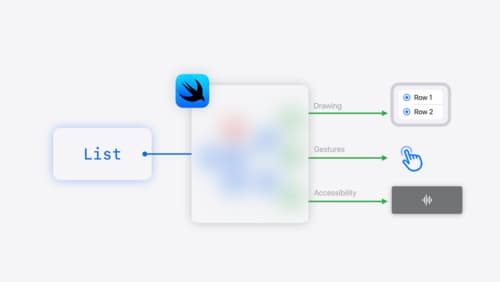@state
Asked on 2025-06-16
2 searches
The concept of "state" is discussed in various contexts during Apple's WWDC sessions. Here are some highlights:
-
SwiftUI Essentials: In the session "SwiftUI essentials," state management is a key topic. SwiftUI uses state to manage the internal data of a view, allowing it to update dynamically. A view property marked as
@Stateis managed by SwiftUI, which handles the storage and provides it back for the view to read and write. This is crucial for creating interactive and dynamic user interfaces. SwiftUI essentials -
Core ML and Stateful Models: In the session "Deploy machine learning and AI models on-device with Core ML," the concept of state is introduced in the context of machine learning models. Stateful models retain history from previous inputs, which can be beneficial for tasks like language modeling. Core ML now supports stateful models, allowing for more efficient handling of state without manually managing inputs and outputs. Deploy machine learning and AI models on-device with Core ML
-
Concurrency and State Management: In the session "Code-along: Elevate an app with Swift concurrency," managing state in concurrent environments is discussed. Swift's concurrency model provides tools to safely manage mutable state, such as using the main actor to protect state from concurrent access. This helps prevent data races and ensures thread safety. Code-along: Elevate an app with Swift concurrency
These sessions provide insights into how state is managed across different technologies and frameworks presented at WWDC, highlighting its importance in building responsive and efficient applications.

SwiftUI essentials
Join us on a tour of SwiftUI, Apple’s declarative user interface framework. Learn essential concepts for building apps in SwiftUI, like views, state variables, and layout. Discover the breadth of APIs for building fully featured experiences and crafting unique custom components. Whether you’re brand new to SwiftUI or an experienced developer, you’ll learn how to take advantage of what SwiftUI has to offer when building great apps.

Deploy machine learning and AI models on-device with Core ML
Learn new ways to optimize speed and memory performance when you convert and run machine learning and AI models through Core ML. We’ll cover new options for model representations, performance insights, execution, and model stitching which can be used together to create compelling and private on-device experiences.

Bring your machine learning and AI models to Apple silicon
Learn how to optimize your machine learning and AI models to leverage the power of Apple silicon. Review model conversion workflows to prepare your models for on-device deployment. Understand model compression techniques that are compatible with Apple silicon, and at what stages in your model deployment workflow you can apply them. We’ll also explore the tradeoffs between storage size, latency, power usage and accuracy.
